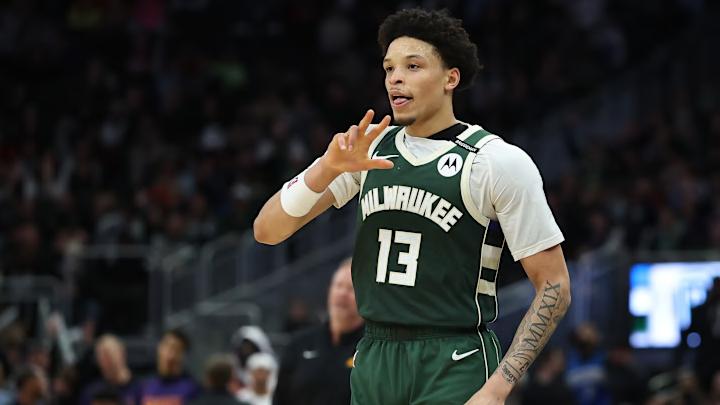The Milwaukee Bucks have become the NBA's most compelling case study on the cost of progress. Milwaukee took a significant step toward turning the end of an era into the beginning of a new opportunity for greatness by signing Myles Turner, but did so by incurring the devastating cost of parting ways with Damian Lillard.
It's the core truth that has made the Bucks' offseason strategy perhaps the most controversial in the NBA, but an unsung hero could soon erase the negativity: Ryan Rollins.
Milwaukee will enter the 2025-26 season with Turner and Giannis Antetokounmpo leading a team that's arguably lost more than it's gained. It completed mid-season moves for the likes of Kyle Kuzma and Kevin Porter Jr., which could prove significant once training camp permits an opportunity to establish chemistry.
The issue remains, however, that question marks exist in the backcourt due to the loss of Lillard and the subsequent inability to replace him after stretching his lucrative remaining salary.
Rollins represents a unique opportunity to build from within and potentially offset the concerns with an under-the-radar talent. Milwaukee acquired the 23-year-old point guard in 2024 and began to see what he's capable of contributing this past season.
If Rollins can build upon his quiet success in 2024-25, then the Bucks would take a significant step toward being the relevant team they're hoping to be in 2025-26.
Ryan Rollins can shield Bucks from criticism with breakthrough season
Rollins appeared in 56 games for the Bucks, starting 19 and averaging 6.2 points, 1.9 assists, 1.9 rebounds, 0.8 steals, and 0.9 three-point field goals made on .487/.408/.800 shooting. Efficiency aside, those numbers admittedly don't inspire faith that he could be an impact player.
Rollins managed that production in just 14.6 minutes per game, however, meaning his numbers translate to 15.3 points, 4.7 rebounds, 4.6 assists, 1.8 steals, and 2.2 three-point field goals made per 36 minutes.
That level of production would certainly be welcome on a team that projects to struggle to create adequate backcourt depth. Thankfully, Rollins began to show signs of being able to produce on a more regular basis during the final months of the 2024-25 regular season.
Over the course of his final 19 apearances, Rollins averaged 9.1 points, 3.0 assists, 2.5 rebounds, and 1.4 three-point field goals made in just 19.2 minutes per game.
The most eye-opening element of his success is the fact that he played six or fewer minutes in five of those 19 appearances. Removing those five games puts his true potential into perspective, as he quietly emerged as a high-level player.
Across that 14-game sample size, Rollins averaged 11.1 points, 4.1 assists, 3.2 rebounds, 1.2 steals, and 1.7 three-point field goals made in just 25.0 minutes per game.
That production may not scream elite, but it would certainly qualify Rollins for healthy discussions about the Sixth Man of the Year award. He's capable of operating with the ball in his hands as a shot creator and playmaker, all the while converting at a clip of 43.0 percent on catch-and-shoot threes.
Even if Rollins simply finds consistency in the realm of what he managed in 2024-25, the Bucks' second unit would take an instant step forward as the starting lineup finds its footing.
